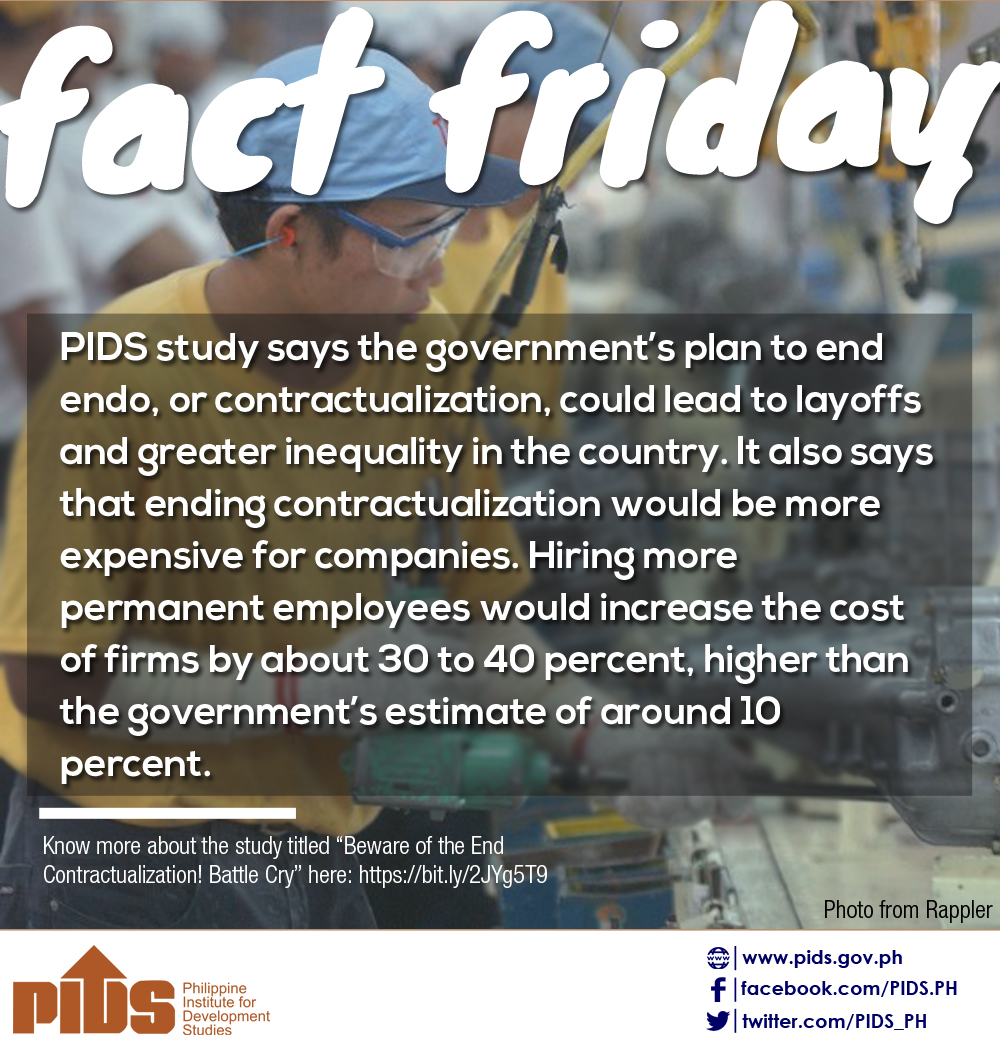AT home, the general belief has turned into a major disaster: the folk wisdom that a college education is a ticket out of poverty was debunked by the number of unemployed college graduates despite costly tuition fees and costs of studies for a four-year academic course.
The fourth Graduate Tracer Survey, covering college graduates, who completed their studies within 2009 to 2011 (reported in a paper by Melba Tutor, Aniceto Orbeta Jr. and James Matthew Miraflor and released by the Philippine Institute for Development Studies in December 2019), found that 15 courses accounted for more than 70 percent of the graduates and nearly half had bachelor’s degrees in just five fields: nursing, elementary and secondary education, business administration and commerce.
The top choice course — BS Nursing — produced graduates that were not working as nurses. Nearly half (47.2 percent) found employment in call centers, retail and wholesale, general office clerks and even as police officers!
Parents buy what they can and sell what they must ensure that their children get past post-secondary, believing that a college diploma will bring in a good return on their investment.
The conventional and historical wisdom among Filipino families is to have the children get a college degree to have a good and stable job.
Of course, that was before overseas employment was introduced by the martial la regime of President Ferdinand Marcos and successive administrations to solve the persistent unemployment and worsening socio-economic conditions.
A significant number of overseas Filipino workers (OFWs) deployed do not have college education, especially those recruited by Saudi Arabian and Middle East employers.
The development of overseas employment, wide disparity in wages paid to professional and skilled workers contributed to the continuing exodus of OFWs, now temporarily sidelined by the coronavirus disease 2019 (Covid-19).
Cyclical and intermittent need for healthcare workers is reflected in the number of enrollments and graduates of Philippine higher education institutions.
Medical and allied courses increased from 2003-2004 to 2008-2009 and continued a downward spiral until 2014-2015. The decline was due to a huge backlog in immigrant visas for healthcare professionals primarily in the United States, and the strong lobby of professional organizations in the country which includes Australia, New Zealand and the United Kingdom.
Parallel to this shift was the waning of Canada’s Live-in Caregiver Program which has since been closed to new applicants. Healthcare workers intending to work as caregivers must now choose to be working as a home child care provider or home support worker providing personal care and companionship for seniors, persons with disabilities and convalescent clients.
On the other hand, information technology picked up from 2008-2009 (302,257) to 2015-2016 (433,712). The AMA Colleges benefited from this boom which literally replaced the ubiquitous live-in caregiver training schools nationwide.
From 1992 when the first outsourcing firm was set up in the country, the Philippines remains a top business process outsourcing (BPO) destination for the estimated $150 billion BPO industry with more than a million Filipinos employed by call centers.
With the lack of jobs for licensed nurses and the perceived suspension of recruitment of nurses overseas, then Labor Secretary Rosalinda Baldoz in March 2012 even encouraged unemployed Filipino nurses to seek employment at call centers.
Open Access, a BPO specialist says that the Philippines “controls the call center game by catering to about 30 percent of the total market share. Proof of this can be seen in how 70 percent of India’s voice service outsourcing market transferred to the Philippines in 2014, making Manila the second-best outsourcing destination in the world.”
As for teachers, there was also a time when US-based recruiters were scouring the hallways of higher and secondary schools for applicants in several states including California, Texas and Louisiana.
After declining from 2004-2005 level (366,988), education and training experienced a resurgence starting with 2010-2011 (404,261) to 725,183 in the 2014-2015 Academic Year.
Data from the Commission on Higher Education (CHEd) mirrors the ups and downs that follows the ebb and flow of overseas employment opportunities.
Starting salaries
CHEd lists five distinct majors under the business administration discipline group: management majors in human resource, marketing, financial and operations and business economics.
Getting to be in the management position in these five distinct majors will take some time after getting an entry level job in the sector or industry unlike graduates of medical and allied, education and training, or information Technology where entry level jobs are much more defined.
Entry level positions in these five distinct majors are more likely than not clerks or administrative assistants.
Lost jobs from pandemic
Based on an interview of employers in the public and private sector, (“Implications of Covid-19 on the Labor Market of Saudi Arabia: The Role of Universities for a Sustainable Workforce”), the most affected occupations are (in descending order) food services, hospitality, education, services and health care. The construction sector was also significantly affected (next to health care) confirmed and validated by the 300,000 or more OFWs repatriated to the Philippines (according to the Department of Foreign Affairs, Dec. 31, 2020 Arab News report) many of whom are in the construction sector.
Statistics Canada (StatCan) also reported on April 9, 2020 (Reuters) that out of a record-breaking 1.01 million jobs loss in March, the most affected private sectors were in the services, accommodation and food services fields.
StatCan’s survey on impact of Covid-19 shows that small businesses (those with one to four employees) suffered a 40-percent or more decline in revenue. Small businesses make up 98 percent of all employer businesses in Canada.
To help businesses recover, the Canadian government has made the Canada Emergency Wage Subsidy (CEWS) available until June 2021. CEWS covers up to 70 percent of an employee’s wages.
For the youth sector, Canada is creating up to 120,000 job opportunities for students through the Canada Summer Jobs (CSJ) program subsidizing up to 75 percent of the provincial or territorial minimum hourly wage for each employee as well as allow employers to hire staff on a part-time basis. CSJ has been extended until Feb. 26, 2022.
In light of this pandemic fog, what lies ahead for Filipino students, graduates and first entrants to the job market?
*After-virus courses designed for employment in the future (AVCDEF)
Revised alphabet for future jobs: AVCDEF*












